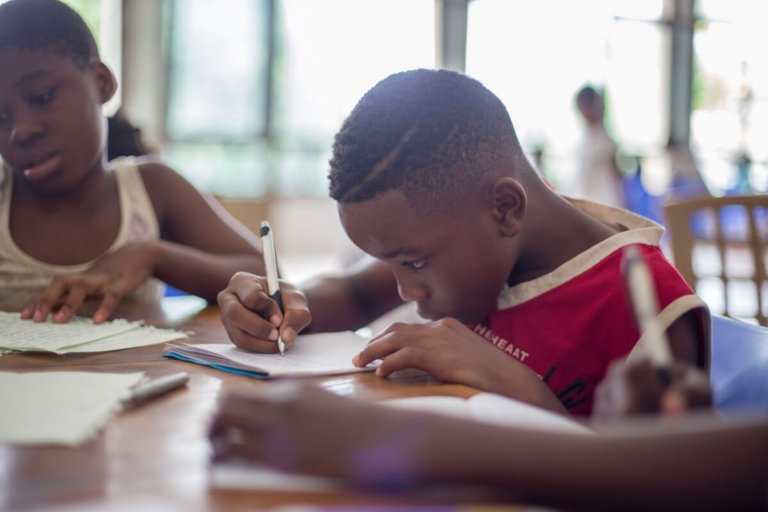
Co-ordinating efforts of the muscles and the brain, fine motor skills are important for our ability to master small movements.
Unlike specific learning skills such as understanding mathematics or regular reading habits, fine motor skills are natural actions you may not even acknowledge while practising them daily.
Required for many school-related tasks, such as stacking blocks or drawing pictures, these types of skills are essential for a young student’s development in and beyond the classroom.
Of course, every student learns at a different pace, and some may struggle with rapidly acquiring fine motor skills.
Here are five skills parents can practise with their children at home and that teachers can use in their lesson plans.

Have you ever heard of the following fine motor skills before? Source: Kelly Sikkema/Unsplash
Construction skills
Learning with Lego pieces, puzzles and train tracks are just a few ways to refine this type of fine motor capabilities.
Construction activities that require pushing and pulling with fingers and storing construction materials in jars with screw lids are great ways to keep these fine motor skills flowing.
This type of skill will also promote hand and finger strength inside the classroom, which is an ability to exert force against resistance using the hands and fingers, allowing necessary muscle power for controlled movement.
A new addition to our sensory room: The Lego wall is a great fine-motor-skills activity for students. Building things is a great way to organize a child and provides a calming activity. #HIS_Learning https://t.co/nH6er8L4aF pic.twitter.com/VLXGFPAqT1
— HIS Learning Support Department (@HIS_INCLUSION) September 10, 2019
Pencil skills
From drawing and writing to scribbling and colouring, this fine motor skill is commonly practised in the classroom during academic activity sessions.
By regularly using pencils and pens in the classroom, students will soon master object manipulation, which is the ability to manipulate tools in their hands skillfully and have controlled use of everyday devices such as a toothbrush or hairbrush.
This will also help teachers understand their students’ hand dominance. By determining which is the student’s dominant hand, they can reinforce its more frequent use in precision task performance.
Some fine motor skills practicing today! Let’s strengthen those fingers so we become magical writers! 😉 pic.twitter.com/uXMANfTbes
— Miss McCutcheon Reception (@MissMcCrecep1) September 12, 2019
IT skills
Skills such as mouse and stylus manipulation, increasing a young student’s IT expertise, also encompass fine motor methods.
Teaching these skills early on will help children develop typing skills and utilise various forms of technology for the future.
You can sometimes tell if a student has difficulty with this if their interest in IT is passive. For instance, if they’re watching TV or a tablet, they don’t need to use fine motor skills.
But if they’re more active in their IT habits by typing and moving the mouse around, they will be more inclined to improve them.
Comcast has created a new web-based remote that lets viewers who may have lost their fine motor skills to control their televisions with their eyes. https://t.co/v2VLqquHP2
— WIRED (@WIRED) June 17, 2019
Scissor skills
A superb contender for hand-eye coordination, classroom activities that involve precise cutting will encourage students to process information received from the eyes to control, guide and direct the hands.
Tasks that involve scissors will also enhance finger strength – that’s why craft sessions are so popular within the international school community.
Teaching children to recycle with materials such as old boxes, paper and egg cartons, and allowing them to create something new is a win-win for all, combining an eco-conscious activity with a fine motor skill session.
Some of us have been enjoying time in the woodshed this morning. The children are improving their fine motor skills along with their listening skills. pic.twitter.com/fKcROp5lGE
— Holbeck class (@holbeckcuckney) September 16, 2019
Self-care skills
This fine motor skill method could teach learners to tie up their shoelaces, to fasten belts, to use cutlery, to open lunchboxes and open food bags.
Or, teachers could conduct lessons that inform students about brushing their hair and cleaning their teeth.
This helps children develop an age-appropriate mastery of self-care tasks, equipping them with natural fine motor skills and the experience of everyday actions.
Parents can also increase these fine motor skills by asking their child or children to help around the house with simple chores.
I love seeing our play based homework in action. HW that fosters creativity, fine & gross motor skills, imaginative play, social emotional learning & so much more! Pictured: students explored floating pennies in paper boats & helping w/ household chores. #flyingthrough1st pic.twitter.com/WPGnmJFYZP
— Kati Shirey (@KatiShirey) September 8, 2019
Liked this? Then you’ll love…
New STEM study seeks to help close the gender gap in schools
Bushwalking and bowls in schools: We need to teach kids activities they’ll go on to enjoy







